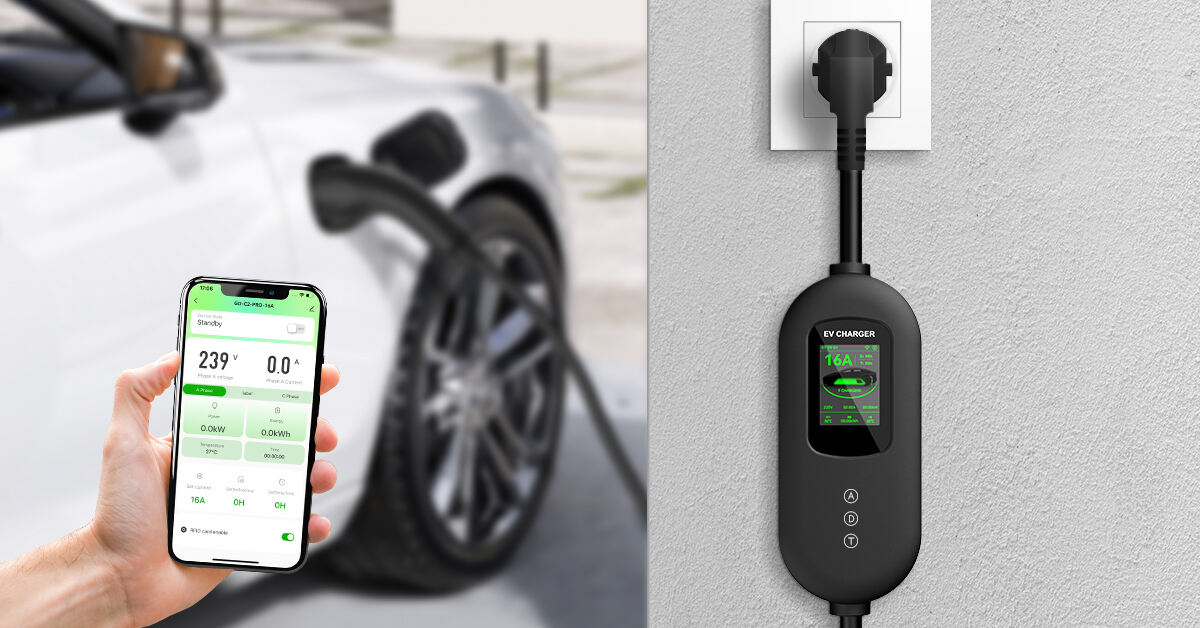Core Certification Framework
Our charger sports CE and RoHS logos, so you can be sure it follows every important EU rule for low-voltage kit (2014/35/EU), low-electromagnetic-noise gear (2014/30/EU), and harsh limits on nasty metals such as lead and mercury. Across the Atlantic, the FCC badge confirms it doesnt upset U.S. radio bands, while the ETL mark from Intertek proves full compliance with North American safety standards - UL 2231-1 for power cords and UL 2202 for EV service tools. Asia is sorted as well: the unit meets Chinas CQC code (GB/T 20234.2) and carries South Koreas KC seal, giving you one charger that legally ticks every box on the planet.
Electrical Safety Innovations
Hiding inside is a three-layer safety curtain that guards both people and machinery. The first barrier, anti-arc misplug tech, prevents any spark when you connect or remove the plug by locking power until the connector seats perfectly. A leakage watchdog then scans for stray currents over 30 mA; the moment it sees one, the charger drops power in a heartbeat to keep shocks far away. Last, over-voltage and under-voltage sensors monitor grid levels and either slow or stop charging if input strays beyond the safe 100-240V +/- 10%.
Inside the charger, Class A insulation keeps everything safe up to 130°C, and all live wires sit inside flame-retardant PC+ABS (UL94 V-0). A tiny microcontroller watches voltage, current, and temperature nonstop, and its fail-safe code always picks safety first. It passed over 10,000 tests of overcurrent protection at 150% (32A × 1.5 = 48A), tripping in under 0.1 seconds.
Thermal Management & Fire Prevention
A four-layer shield keeps heat away from the outer case. Surface-mount NTC sensors check eight hot spots-power module, transformer, plug, and more-with a lightning-fast reply under 50 ms. A TÜV Rheinland-tested aluminum heat sink moves warm air out, while a phase-change pad soaks up brief peaks. If the inside hits 65°C, the charger cuts power by 20%; at 85°C it shuts down, stopping trouble in tight spaces.
To copy real-life fire and weather tests, the charger goes through:
Put together, these tests let the Nordic version work from roughly -35C up to 45C. More than 20,000 chargers are already running in Sweden and Finland.
Mechanical & Environmental Safety
Sealed to IP55, the case shrugs off dust and weak jets of water (30 kPa from every angle), so it can sit outdoors in rain or snow. The cable wears a PVC sheath good for 9,000 bends (see IEC 60245-3), and the plug has gold-plated pins (50 m thick) for low resistance and rust proofing. Heavy-duty strain relief takes a 50 kg pull without tearing, making it safe for people who move it around a lot.
On board, the ETL-folding plug slips inside IATAs max carry-on size (20 x 15 x 8 cm), and its latch stops accidental pops. Weighing just 2.8 kg, it clears TSA limits, and because there are no lithium cells-the usual fire worry-it slides into checked bags without drama.
Functional Safety & User Protection
User-facing safety features include:
The chargers smart interface displays a live safety score. If conditions sour, it switches to Safety Mode. Humidity over 90% or a sketchy ground triggers the mode, halving the current. Users keep charging, but nothing in the room gets fried.
Compliance & Testing Protocols
Our EV charger does far more than pass basic approvals; it takes extra tests few companies run.
Electromagnetic Compatibility (EMC): It meets EN 61851-1 for radiated noise (below 40 dBμV/m from 30 to 1,000 MHz) and EN 61000-6-3 for line-borne noise, so planes and bedside monitors hear nothing.
Decibel drop numbers mean the charger wont annoy radio gear or other sensitive circuits.
Dielectric Strength Testing: Each unit sits at 3,000 volts AC for one minute between live wires and the case, recording leakage under 5 milliamps.
Insulation Resistance Testing: At 500 volts DC we see 100 megohms or more.
Drop Testing: The unit tumbles 1.2 meters onto concrete from six angles per IEC 60068-2-31, proving it wont crack in the real world.
Global Safety Compliance & After-Sales Support
Boxed with every charger you get easy-to-read proof that it is safe.
Handbooks in English, German, Thai, Chinese, Spanish and French shout warnings in bold.
Regional certificates-CE, RoHS, FCC, ETL, CQC and KC-confirm the product meets local law.
A full Safety Data Sheet names parts and flags any hazard in plain language.
Greens worldwide service team stands behind that safety.
Talk to tech staff for twelve hours a day through our German and Thai centers.
We respond to issues in four hours and ship spare parts within three business days.
Routine firmware updates spot new risks and fix them over the air.
Recall plans follow ISO 14001 so protecting customers also protects the planet.
Sustainability & Safety Synergy
Greens safety features work shoulder to shoulder with our green goals.
When a charger is tough, energy-efficient and easy to fix, fewer units are wasted and fewer resources used.
Half the plastic in each charger comes from post-consumer recycling.
We use lead-free solder-Sn99.3Cu0.7-to meet RoHS standards.
When not in use, each unit draws less than 1.5 watts, quietly saving energy all day.
SGS verifies the carbon footprint, making it simple for buyers to log ESG wins.
In Europes camping market, safety-approved models enjoy a repeat purchase rate of 42 percent, proof of the trust they have built. More than 150,000 chargers sold in over twenty countries have sparked no safety scares linked to design defects. By pairing cutting-edge safeguards with global certifications, Green Oceans portable battery sets a new standard for worry-free road-side EV charging, reassuring users no matter where they plug in.
